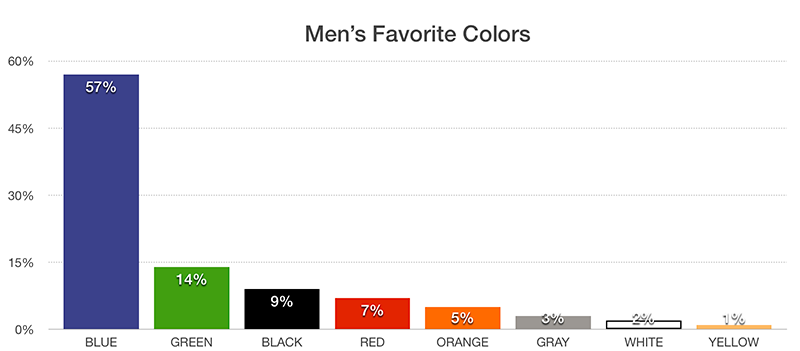Gender Color Preferences
 Color Preferences by Gender
Color Preferences by Gender
Joe Merkley – Your Marketing Maven
The most popular car colors are white, black, silver and gray and may very well be explained by perceived acceptability… but is there some other factors at work that explains why there aren’t very many purple power tools?
A prominent study on this topic is Joe Hallock’s Colour Assignments. Hallock’s research data showcases some clear partiality in certain colors across gender.
It’s most noteworthy that a person’s environment–and especially cultural acumen–factors a strong role in defining color appropriateness for gender, which in turn can impact people’s choices. Ponder, for a moment, this coverage by Smithsonian magazine detailing how blue became the color for boys and pink was eventually deemed the color for girls (and how it used to be the opposite!).
Hallock’s findings for the most and least favorite colors of men and women:




The most noteworthy points in these graphs are the dominance of blue among both genders (the favorite color for both groups) and the contrast between genders on purple. Women list purple as a top-tier favorite color, but no men list purple as a favorite color. (Presumably, this is why there are no purple power tools, a product largely associated with men?)
Additional research in color study, perception and color preferences show that when it involves shades, tints and hues men seem to prefer bold colors while women prefer softer colors. Additionally, men were more likely to select shades of colors as their favorites (colors with black added), whereas women were more receptive to tints of colors (colors with white added):

Image credit: KISSmetrics
The above infographic from KISSmetrics showcases the disparity in men and women’s color preferences.
Keep this information in mind when choosing your brand’s primary color palette. Given the starkly different taste preferences shown, it pays to appeal more to men or women if they make up a larger percentage of your ideal buyers.




